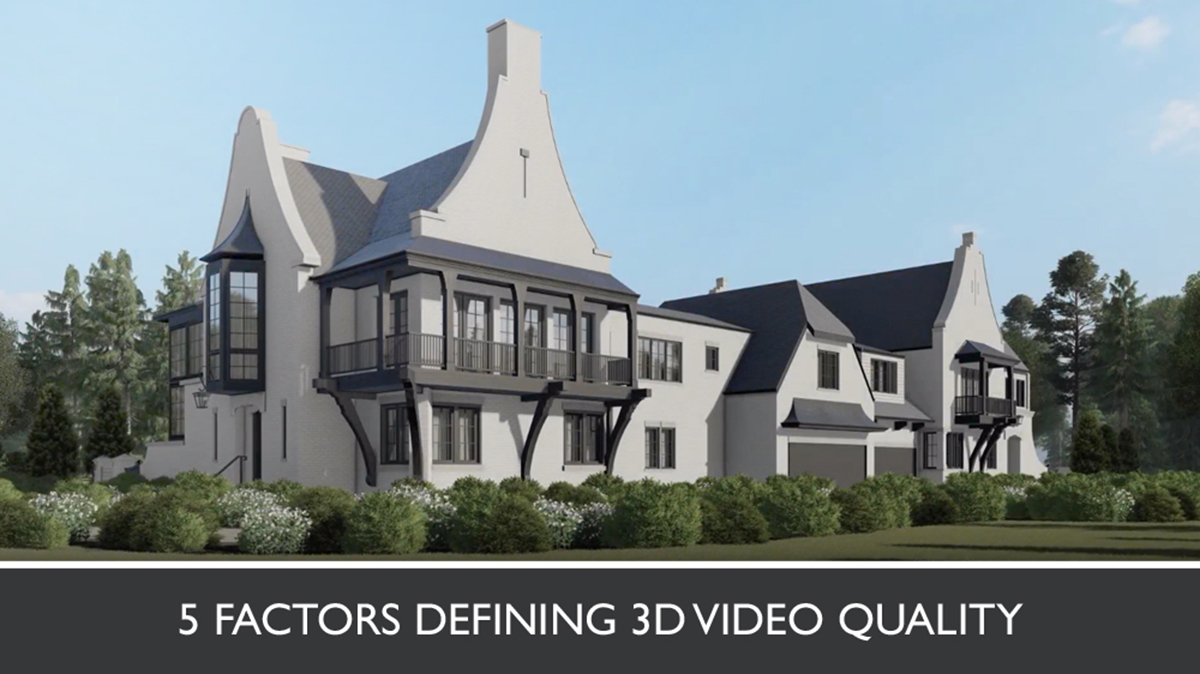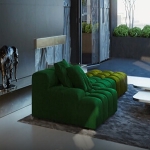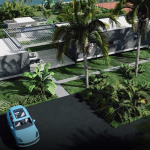CGI animation for architecture makes all the difference when it comes to presenting a project. A high-quality 3D video will make stakeholders or property owners pay attention. When the screen lights up and a beautiful movie starts, the audience abandons phones and thoughts about work.
Not to mention that with a CGI animation, architecture presentation becomes so much more convincing. There is no need to explain the project aesthetics with loads of sketches and verbal explanations — everything is on the screen, in photoreal quality. And unlike drawings,CGI animation is the format everyone understands — there’s no need to have an architectural background to get the picture.
So to make a strong impression and present an architecture design clearly and accurately, CGI animation is a perfect choice. And it’s easy to get: contact a CGI studio, fill out the brief, and the 3D team will get to work. There is a trick, however. How does one find a 3D studio that will create a high-quality CGI animation? Everyone promises, but few deliver.
The best way to find an architecture animation studio is to examine its portfolio and evaluate its quality. How to do that? Not so easy — unless you know how. But with that, we can help you. Here are 5 factors that define the quality of a cgi animation for architecture — read up and use them to find the perfect cgi contractor!
#1. Correct Lighting Settings
The light largely determines the impression that a 3D architecture animation makes on the viewers. In fact, it can make or break the whole effect of a presentation. So, when evaluating the quality of CGI animations for architecture in a 3D company’s portfolio, light is the first thing to look at.
If the light is well set, the viewers can see every detail of the architectural design clearly. Experienced 3D Animation Artists tend to choose the angle of 45 degrees in relation to the house. This way, the light brightens up every element of the building and shows its dimensions. So, the viewers will get a full understanding of what the real estate will look like.
When the light settings are off, the sun might shine right into the camera. As a result, the house will look flat and the viewers won’t see the details. Or vice versa: when the shades are too dark, some parts of the building will be hidden. This way, the viewers won’t be able to see the whole house in the CGI video — most uncomfortably.
If a studio’s portfolio contains 3D animations with an unflattering or faulty light, the Architect would better search for another 3D firm. But if it consists of CGI videos with soft natural light highlighting every detail and benefit of the house’s architecture, the 3D Animation Artists of the studio know their craft.
#2. Appropriate Material Settings
CGI animation for architecture consists of many still 3D renders that are united with the help of special software. And the settings of materials in these 3D renders define whether all objects in the 3D video look realistic. The trick is that all materials, be it wood, stone, metal, or glass must have volume and detailed surface patterns. For instance, marble objects will show veins, and wooden ones — grain.
But if the material settings are off, the objects in the CGI animation will be flat, schematic, and lifeless. Obviously, the video where everything looks like it’s made from plastic will not produce much of an impact. So if the company’s portfolio shows poor work in this area, the Architecture company would be well-advised to continue the search.
#3. An Interesting Scenario
Basically, CGI animation for architecture is a short film about the future real estate. So, as any good movie, it should have a structured and interesting scenario. It will help to convey the comfort of the space, as well as capture and maintain the attention of viewers.
The effect of a professional movie cannot be reached if a CGI animation for architecture is just a sequence of different views of the dwelling. One should pay attention that digital videos in a CGI studio’s portfolio tell stories. The scenario itself depends on a property type and purpose. It’s possible to fly over a future house territory, take the audience on a tour around the interior. Moreover, the action can take place in any season or time of the day — or all of them. The seasons, weather and lighting may change throughout the 3D architectural demonstration.
#4. High-Quality Post-Production Effects
Post-production refers to the effects applied by 3D Animation Artists to videos after the main work is done. These effects help to fine-tune the CGI animation and add a special atmosphere to it. For that purpose, 3D Artists use professional software such as Adobe After Effect and Fusion.
At the post-production stage, 3D Artists refine color palette, hues, sharpness, and shading. Also, they can add optical effects — motion blur, lens flares, halo glows and more. It is essential that the effects match in all the renderings the 3D animation consists of. For 3D visualizations create beautiful photorealistic footage only when they are united by a consistent style and look.
To set and accentuate the atmosphere of a CGI animation, 3D Artists add different details to it. These can be weather effects, birds or animals, people, cars, and other elements that can help convey the mood of a location. For example, mist over the forest that surrounds a cottage helps show a dreamy and a bit mysterious ambiance. Similarly, cars and people around a new skyscraper help viewers grasp the feel of a vibrant metropolis. Such elements must always look like an integral part of the video. If the elements look photoshopped, this is a sign of a poorly made CGI animation.
#5. Right Soundtrack
Music is a finishing touch that greatly influences the quality of a CGI architecture animation. A well-chosen soundtrack emphasizes the atmosphere and empowers the plot of a 3D video, evokes the emotions of the viewers.
If the picture and music have no connection, the video will look odd. The soundtrack and visuals must work together, reinforcing each other’s effect. To achieve that, 3D Artists adjust specific moments of the footage to the music.
Now you know how to evaluate the quality of a CGI animation for architecture. Post-production, light, materials, music, and plot will reveal the quality of the video and help decide whether to collaborate with a 3D studio or not. The rest you will only find out during the project — but these 5 criteria will help to conduct the first stage of selection.
Looking for a reliable provider of 3D architecture animation services? Then you may start selection with our portfolio! In fact, you can just click on any of the 3D videos above — and you will see you need to search no more. Contact our studio and get high-quality photoreal visuals!





This is valuable information.
Happy I came across this blog, thank you so much for your work!
Thanks for valuable content. I think it will help me to work with my 3D contractors more effectively.
Love your videos, they make great real estate materials
Cool post, thanks. I can totally use it for work
Choosing a soundtrack for the animation is a kind of art. You have to find something 100% appropriate, yet not the same thing everyone else does for such videos.
Cool! And can you help with the scenario, if need be?
Hi, Mitchell! Sure, you can talk about that with the project manager in the beginning of the project.
Thanks a lot!
So true, it’s all about the story
Thanks for the marvelous posting! I quite enjoyed reading it. I especially appreciate that you’ve highlighted the importance of the scenario and soundtrack for animations
Thanks for sharing your thoughts. I truly appreciate your efforts and I am waiting for your further post thank you once again.
Hi, I do believe this is a great site 😉 book-marked
Always such fantastic info from you, man.
You are doing a very good job. These topics are not that common on web! Saved as a favorite, love your web site
Now this is really interesting!